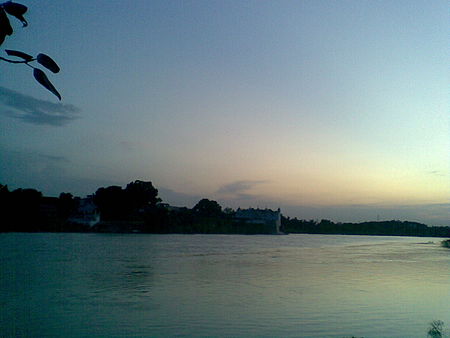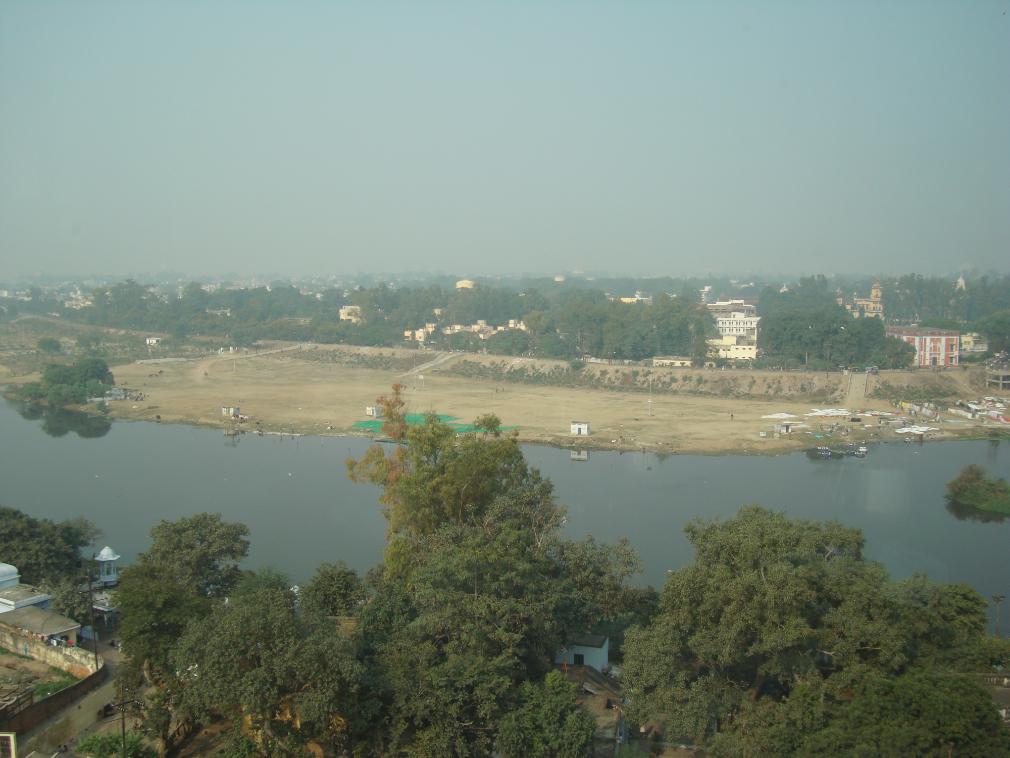Gomati River
The Gomati or Gomti river is a tributary of the Ganges. According to Hindu mythology, the river is the daughter of the Hindu sage Vasishta; bathing in the Gomati on Ekadashi (the eleventh day of the two lunar phases of the Hindu calendar month) can wash away sins. According to Bhagavata Purana, the Gomati is one of India's transcendental rivers. The rare Gomti Chakra is found there.
The Gomti, a monsoon- and groundwater-fed river, originates from Gomat Taal (formally known as Fulhaar jheel) near Madho Tanda, Pilibhit, Uttar Pradesh, India. It extends 960 kilometres (600 mi) through Uttar Pradesh and meets the Ganges near Saidpur, Kaithi, 27 kilometres (17 mi) from Varanasi district.
It meets a small river, the Gaihaaee,20 kilometres (12 mi) from its origin. The Gomti is a narrow stream until it reaches Mohammadi Kheri, a tehsil of Lakhimpur Kheri district (about 100 km from its origin), where it is joined by tributaries such as the Sukheta, Choha and Andhra Choha. The river is then well-defined, with the Kathina tributary joining it at Mailani and Sarayan joining it at a village in Sitapur district. A major tributary is the Sai River, which joins the Gomti near Jaunpur. The Markandey Mahadev temple is at the confluence of the Gomti and the Ganges.
After 240 kilometres (150 mi) the Gomti enters Lucknow, meandering through the city for about 12 kilometres (7 mi) and supplying its water. In the Lucknow area, 25 city drains pour untreated sewage into the river. At the downstream end, the Gomti barrage converts the river into a lake.
In addition to Lucknow, Lakhimpur Kheri, Sultanpur Kerakat and Jaunpur are the most prominent of the 15 towns in the river's catchment basin. The river cuts the Sultanpur district and Jaunpur in half, becoming wider in the city.

